


6th Battalion, 20th Engineers
The Sixth Battalion
Note: Most of the text of this article comes from "TWENTIETH ENGINEERS -- FRANCE -- 1917-1918-1919"
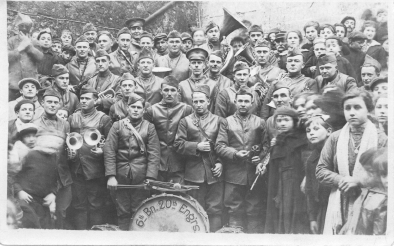
The Sixth Battalion was ordered organized December 7th, 1917. The formation began at Ft. Meyer, Va., about December 15th, 1917. Some two hundred recruits composed the Sixth at this time. Some were hospital cases left over from other battalions, some were trained men left purposely to whip the new outfits into shape and others were raw recruits from all parts of the country. On December 27th the skeleton Battalion moved to Camp American University, Washington, D.C.

Photo of 6th Battalion, 20th Engineers at Camp American University, Washington, D.C.
On January 1st, 1918, with the arrival of several hundreds of men from the Northwest and the great lakes region, the Sixth reached war strength. From that time on the days were filled with indescribable hurry and bustle attendant upon preparations for sailing. On January 22nd came the final orders for moving. At 9:30 P.M. under full pack the Sixth Battalion moved out of Camp American University on a hike of five and a half miles through the snow to Ft. Meyer, where we entrained at midnight for New York, reaching that port about noon the following day.
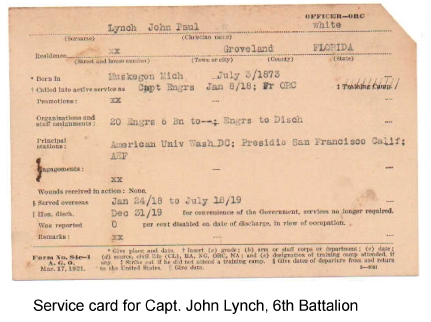
On January 23, 1918, late in the afternoon the 6th Bn. 20th Engrs. Together with several Aerial Squadrons and a few miscellaneous troops, 2,300 men in all, went on board the Anchor Line troopship "Tuscania." The following morning we shipped anchor and steamed for Halifax to join the rest of the convoy and reached that port on the morning of the 26th. We dropped anchor in the roadstead directly offshore from the beached "Belgian Relief" and that part of the town devastated by the great fire of 1916. On Sunday, the 27th of January,we left the harbor in company with three other troopships and eight freighters, all led by the American Cruiser "Seattle." The Tuscania was the second troopship in the convoy formation, the Baltic preceding her.
On February 4th, twelve days out, while west of Ireland we were met by eight British destroyers whose presence did much to ease the minds of those who feared a brush with the Germans. On the afternoon of the fifth we had rounded the north of Ireland and were proceeding southward. On either side we could dimly discern the cliffs of Scotland and those of the rocky Irish coast from which we judged we were in mid-channel and about thirty miles from land. Dusk came early and at five thirty the night was quite dark. Shortly before six - most accounts say thirteen minutes to six - the thirteenth day out of New York, the first troopship carrying American soldiers was torpedoed.
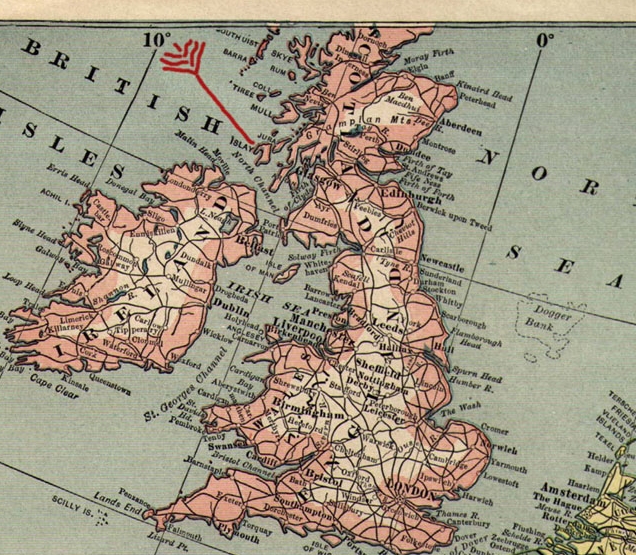
The earliest knowledge we had of the proximity of a German submarine was a decided shock which rocked the big ship from end to end. Simultaneously all lights went out and a deafening crash echoed and re-echoed through the ship. There was no question we had been hit, and so, life belts on, we rushed for our stations. Our boat drills had been perfunctory ones at the best, merely locating the lifeboats assigned and taking our places quickly, but in an orderly manner. Before the crash had died away every man was on his way to his post. The corridors, passage ways and stairways were a seething mass of olive drab streaming for the decks. The rush was devoid of all hysterical excitement. Each man was excitedly cautioning his neighbor to " take it easy, 'don't rush," ''don't crowd; she isn't sinking''; yet he was using his elbows, feet and hands in regular mess-line tactics to further a speedy arrival at his lifeboat. From the lowest deck - the troops occupied five—to the first cabins, a steady stream of men—and profanity—issued. In ten minutes practically every able bodied man was at his post. Then we began to take stock and find out what had really occurred. The torpedo had struck us squarely amidships on the starboard side. A great hole was torn in the hull and all the superstructure directly above was reduced to a mass of wreckage. Several sets of davits with their lifeboats were utterly demolished, thus diminishing the chances of getting away safely. From the minute of the explosion the ship began listing to starboard. It became exceedingly difficult to walk on deck, and more than one of the boys on losing his grip on the port rail would find himself sprawled against some of the deck machinery, a keg of rope or even the rail on the lower side.
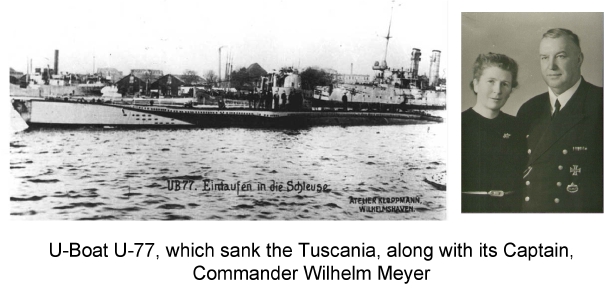
These ten or fifteen minutes elapsing from the moment we were struck were filled with action. With all indications of a speedy sinking staring us in the face, we worked feverishly to lower the lifeboats and cut away the rafts. Pitch darkness made our work more difficult. Here and there a pocket flashlight came into play. Later the auxiliary lights were turned on and we could better see what there was to do. The work of lowering the lifeboats proved discouraging. Not only had we lost several, due to the terrific effects of the explosion, which had thrown a sheet of flame and debris two hundred feet into the air, but we discovered boat tackle in many cases to be fouled or rotted and unfit for use. Some of the first boats we attempted to lower were capsized in midair, spilling their occupants into the icy water. The high seas running and the darkness made the rescue of these men almost impossible. Occasionally we got a boat away in good nothing more serious than sprung planks or missing rain plugs. These difficulties were overcome by bailing with service hats which served the purpose very well. On the port side the launchings were accompanied with another handicap. The Tuscania had acquired such a list that we found it necessary lifeboats down the rivet - studded sloping side of the ship with the aid of oars as levers. In all some thirty lifeboats were launched, and perhaps twelve of these were successful.
After acquiring a heavy list, the Tuscania seemed to sink no lower in the water. Of those on board, though, the haste to go somewhere else abated not a bit. With the lifeboats gone together with the rafts, the situation looked none too encouraging. The boys showed few signs of nervousness. Standing there, lining the rail, waiting for the next development, some six hundred of them smoked or talked quietly, discussing their plight. The remarkable part of it all was that they took everything in a matter - of - fact way with a sort of ''well, what's next?'' attitude. Occasionally few would sing some little song, indicative of their feelings, such as ''Where Do We Go From Here, Boys?'' or "To Hell with the Kaiser.'' The absence of any panic, or effort and time in prayer was notable. A casual observer might, had he acquired a few snatches of the conversation, have thought the latter practice was being indulged in. A closer observer would have revealed a collection of wonderful expressions from vocabularies replete with all the known cuss words in existence. The objects remarks were chiefly the U-boats, the Kaiser, the Germans and the authorities criminally neglectful of the safety of the troops.
With all the lifeboats gone, a general wonder as to the next move was voiced. Suddenly on the starboard, out of the darkness, a tiny destroyer came sidling up to the troopship. With a display of seamanship nothing short of marvelous she approached near enough for the men to be transferred to her deck. Some times almost hidden by the roll of the big ship, the destroyer clung to us. Ropes were let over the side and several hundred of the boys went over. When the destroyer was loaded to the limit she steamed away, leaving a few boys dangling to the sixty foot ropes. It was here that one of our cooks, a two - hundred pound specimen, surprised us all and no less himself, by climbing all the way up to the deck again. When asked to demonstrate his feat a few days later in our Irish camp, he was unable to climb the height of the rafters in our barracks.
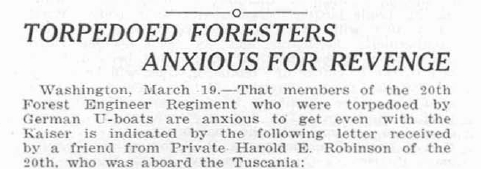
Click the image for a letter written by a Tuscania survivor, vowing revenge;
from Southern Lumberman, March 23, 1918
Shortly after the departure of the destroyer-load of troops another one sidled up to us and completed the work of rescue. She, too, was crowded to the limit; but she stayed till every known person on board had been transferred. No sooner had she pulled away when some of the longitudinal bulkheads gave way, admitting the water to the port holds. Slowly the Tuscania resumed on even keel. Very low in the water and considerably so in the bow, she floated for another hour. At about ten o'clock, four hours after being struck, she took her final plunge. With a muffled explosion as the water reached her boilers, she gently slid, bow first, under the surface.
During all this time the lifeboats and rafts were drifting helplessly about. It was impossible to make any headway with the oars, as most of the boats were full of water, and there was such a heavy sea that any such effort was useless. In and out among these boats the destroyers raced, looking for traces of the submarine and dropping depth bombs where there were any suspicious indications. Each time one of the "ash cans'' exploded the boats would shiver and shake with the concussion. Those men who were in the water were knocked breathless with each explosion, and in a few cases were rendered unconscious.
The noise of the depth bombs, the bursting of the distress and illuminating rockets, together with the reports from the destroyer's deck guns, created the impression that a naval battle was in progress. Most of the boys, and they had some excuse for their belief, were sure we were being shelled by the Germans. However, later information convinced us that the submarine had left the vicinity immediately following its successful attack on our convoy.
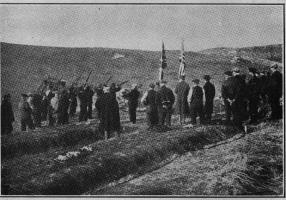
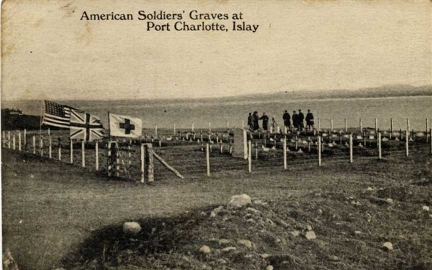
While the work of abandoning ship was in progress were added to by a number of trawlers and smaller fishing boats which helped in gathering in the survivors. These together with the destroyers combed the vicinity picking up men in lifeboats and rafts. Each bit of wreckage was closely scanned on the possibility of there being someone clinging to it. In this way the majority of the living were rescued. A few swimming alone and helpless were left. Darkness and the wide area the rafts and boats were scattered made it impossible to find them all. Three lifeboats, each more than filled with its complement of men, were overlooked. Among the first the big ship, they had drifted quite a distance before the rescue work had fairly commenced. With no guidance and at the mercy of the wind and waves they drifted aimlessly for hours and then were dashed upon the cliffs of the Isle of Islay, Scotland. Out of more than sixty men in one of these boats but eight were saved. It was here that the greater part of our loss was sustained.
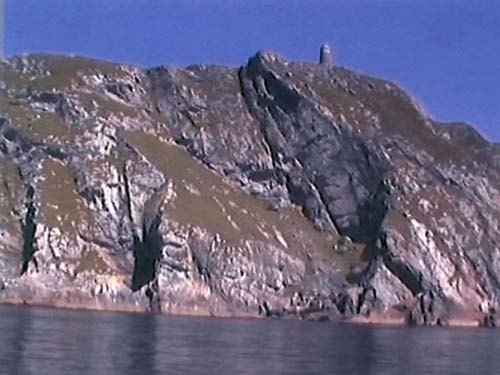
The coast upon which many soldiers of the 6th Battalion were lost. The monument to those who died in the Tuscania sinking can be seen at the top of the cliffs.
A combined search for the submarine and survivors was kept up until early morning by the torpedo boat destroyer and trawlers. When it seemed as though further search was useless they entered various ports of the north of Ireland. The men were landed chiefly at Londonderry, Larne and Buncranna. A few were scattered at various other places in along the coast and also in Scotland. In a week's time we had located our different groups of saved and again resumed some sort of organization. At this time we left for Winchester, England, where we were stationed for five weeks. This time was used in getting us supplies of equipment and clothes, of which we had none to spare. Many of the men were dressed in British sailors uniforms, British soldiers uniforms and even civilian clothes. Finally we were made presentable enough and were permitted to sail for France and take our place so long waiting for us.
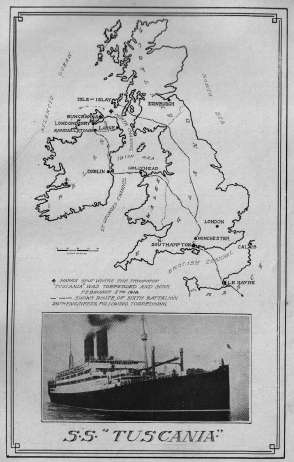
Click on the map above to see the various routes by which the battalion was reunited and moved to France
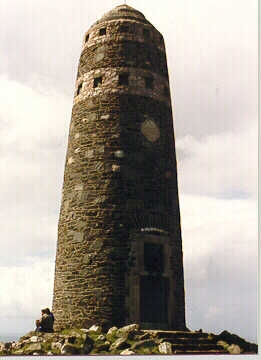
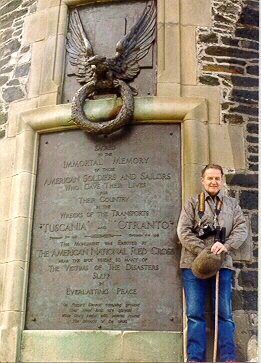
The monument to those who perished in the sinking of the Tuscania, on top of the cliff above the brutal coastline upon which so many 6th Battalion soldiers perished.
Leaving Southampton March 23rd we proceeded a la cattleship to La Havre, France, staying one day. Next we entrained for Angers, the Engineer replacement headquarters. The following three weeks were spent in accumulating equipment and otherwise reorganizing our outfit. Due to the loss of all our records this work took up much time but was finally completed. During these weeks, too, we spent long hours in mastering the intricacies of trench digging, pontoon bridge building, and other warlike occupations. Rumor--with some basis of fact--had it that we were to be placed in the Pioneer Engineers and sent to the assistance of the forces defending Paris on the occasion of the memorable drive of the spring of 1918. However, Headquarters decided that we could better serve by staying with our original plans, so on April 12th we started for the maritime pine districts of the Landes.
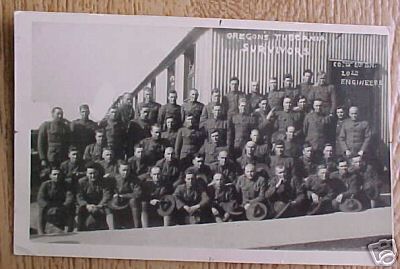
Survivors of the Tuscania disaster, from the state of Oregon.
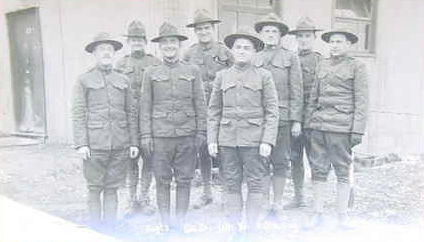
A group of Sergeants in Company D, 6th Battalion, 20th Engineers
On the 13th we arrived at Castets which proved to be the scene of our operations till a month before the Armistice. Here our Battalion was attached to the British Forestry Service.
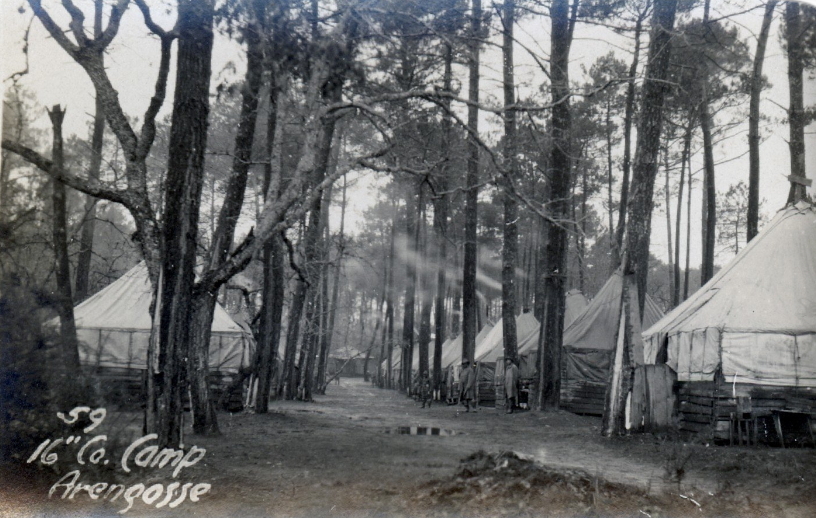
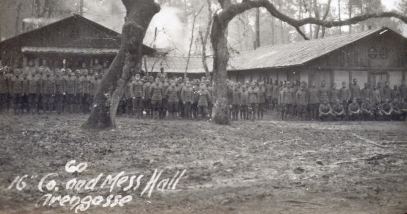
Images of the camp of Company D, 6th Battalion (16th Company) near Arengosse in the Landes Forest
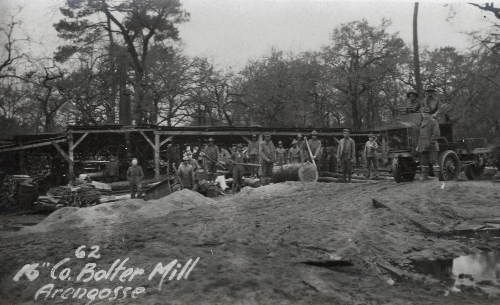
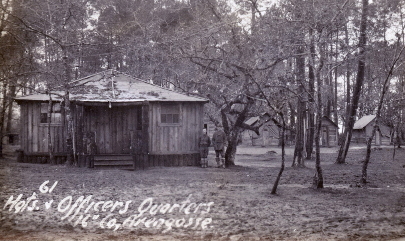
We started operations with three mills. "D" Company, or the 16th Co., operated a 20,000 ft. capacity Canadian mill and "E" and "F" or the 17th and 18th Cos., each operated a 10,000 Clarke mill. The 16th and 17th Cos. mills were right in the outskirts of the town and the 18th Cos. mill about five kilometers outside.
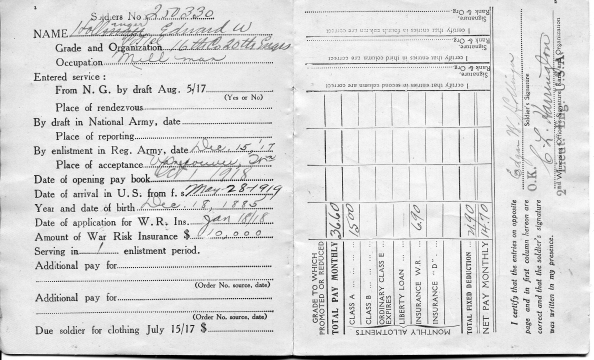
Paybook for Pvt 1Cl Edward W Hollinger, Millman
Note that his monthly gross pay was $36.60, net pay $14.70
Photo courtesy of the US Army Engineer School Museum
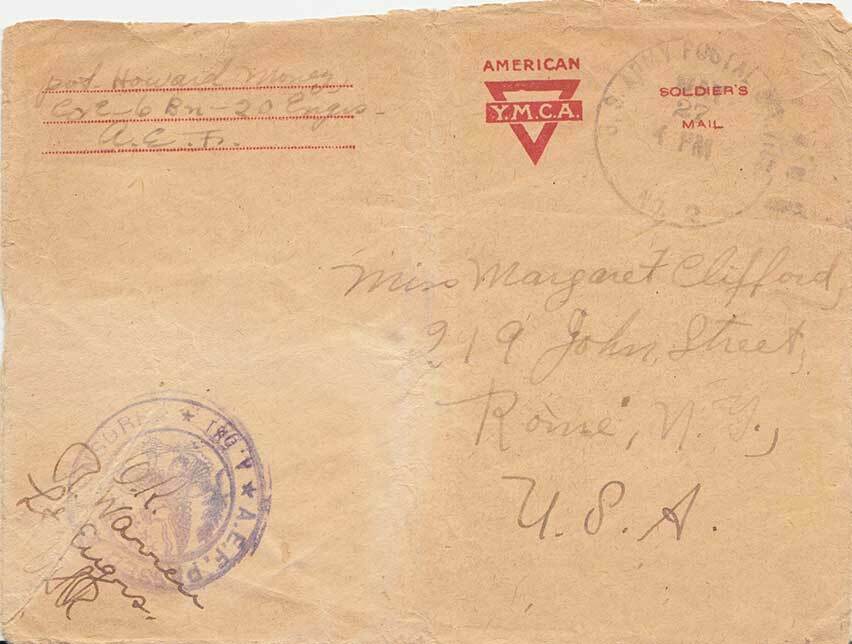
Envelope from Private Howard Money, Company E, 6th Battalion
Note the YMCA cachet, free mail notation, and censor's stamp
Those months spent on the Spanish Front were replete with the usual events of Army or Twentieth Engineers life. Occasionally some Major General would drop around and give us the "so this is Paris" but for the most part we were left alone in our isolation. It was here that the outfit received the nickname of "The Fighting Sixth"--this because of the constant lack of harmony and cooperation evidenced by our commissioned heads. Despite this handicap, the men under the able generalship of Major F. S. Kellogg, were able to assist materially in putting a spoke in Wilhelm's wheel.
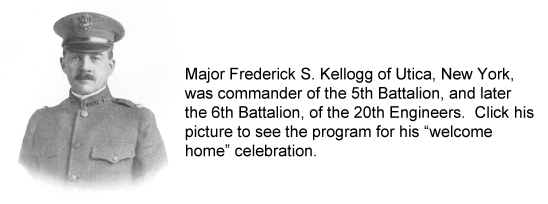
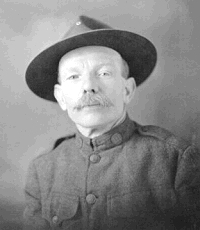
One of the soldiers of 16th Company was Walter Toy, who enlisted in the 20th Engineers at the age of 54 years. He began his military career in the British Royal Navy and served there for many years. Toy eventually married and had nine children, all before he joined the 20th Engineers. He survived the sinking of the Tuscania. Click his picture to the left for an article on his adventures.
When the cut of the Burnt Area was almost completed in October, the Sixth turned over all mill equipment to the British who continued the work with the aid of several hundred German prisoners of war. The Battalion moved to a new locality some fifty kilometers north, the 18th Co. to Captieux, and the 16th and the 17th Cos. to Labrit near by. Here we operated three small mills of 10,000 ft. capacity and one bolter mill. In about a month the work at Labrit was halted by the Armistice, and after another month cleaning up the whole Battalion concentrated at Captieux in the Burnt Area.
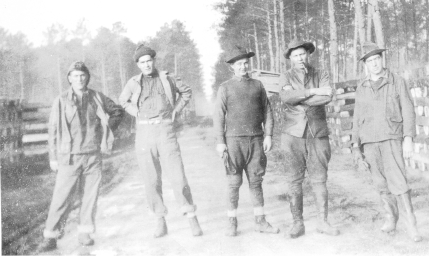
Soldiers of the 16th Company, 6th Battalion, 20th Engineers
Photo courtesy of the US Army Engineer School Museum
The Armistice had been signed a month but still the work went on—ten hour shifts. Not only did the work go on, but the weeks and months, with little prospects for moving. It was during these days that there were so many fantastic rumors abroad regarding our sailing. One of the most widely known was that the Regiment was to build its own transport to return in. The next hearing had it that sawmill machinery was to be utilized for power. A following version related how the Fourth Battalion at Mimizan on the Coast had the keel laid and some of the ribs in place and that bookings for passage were being made. Finally, though, we received orders to proceed to Bordeaux and the embarkation camp at Genicourt. We arrived at that receiving camp the 11th of May and embarked on the "Santa Paula" on the 14th, following which we promptly observed the quaint custom of depositing our emergency rations in the Gironde River, a rite grown almost sacred with the departing from the Bassens dock.
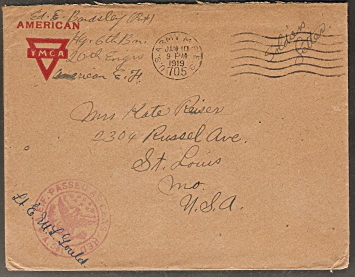
Envelope from Private Ed. E. Bardsley, HQ 6th Battalion
Note the YMCA cachet, free mail notation, and censor's stamp
After a seemingly unnecessarily roundabout voyage our little steamer sighted the ''Old Country." May the 28th 1919, was the welcome day [port of Brooklyn] -- the day that so many of us were to see Liberty's face for the last time, for as one lumberjack remarked, "She'll have to turn around if she ever sees me again."
That same day—the 28th—we proceeded to Camp Merritt when the last sad adieus
were made and the Battalion broken up into detachments bound for far corners of the
country—but not so far but what the comradeship of the service, the comradeship of
''The Fighting Sixth" will always exist as one of pleasant remembrances of Over
There.
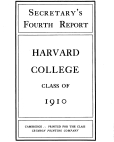
Read the memoirs of Lt. Richard Warren, 6th Battalion, 20th Engineers, as he wrote them in the Harvard College, Class of 1910, Secretary's Fourth Report